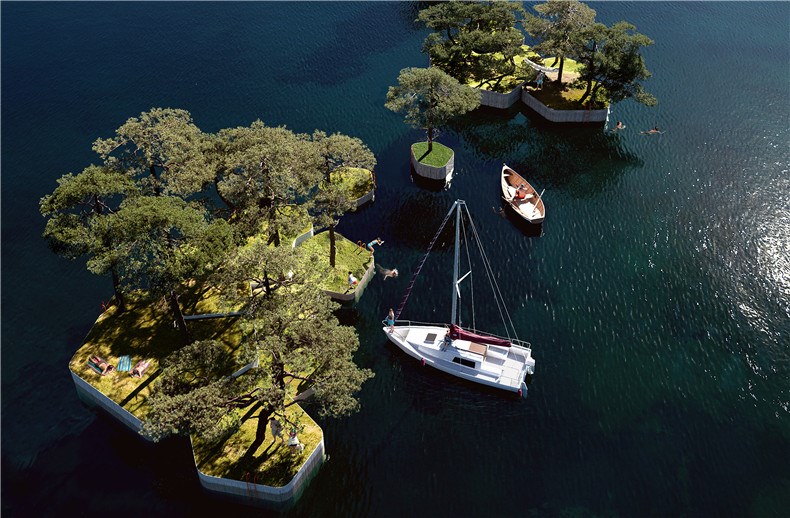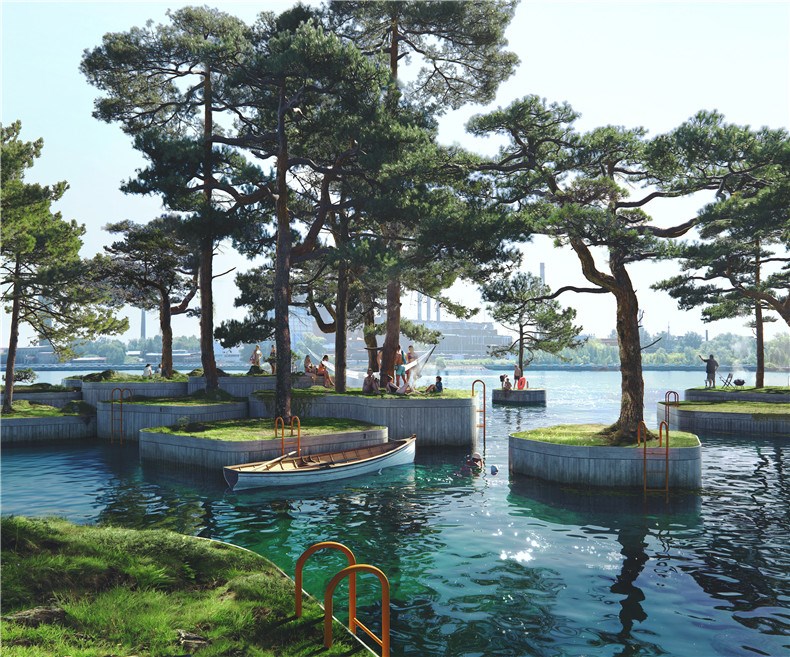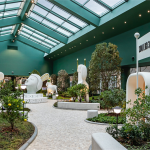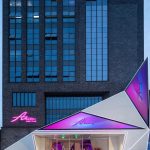MARSHALL BLECHER & STUDIO FOKSTROT: A Park on a Floating Island
Marshall Blecher and the design studio Fokstrot have introduced the concept of “wilderness and whimsy” to Copenhagen, the capital of Denmark, by creating a series of floating islands in the city’s harbor. This project adds new experimental spaces to the city, available for fishermen, kayakers, stargazers, and swimmers.
These islands bring back the wild and magical scenery to the port. Suspended above these small islands are plants, trees, and grass native to Copenhagen. Below them are anchor points that serve as habitats for birds, insects, seaweed, fish, and mollusks. These islands create a dynamic and expansive green space right in the heart of the city. The project also suggests a new form of climate-adaptive urbanism that is inherently flexible in its usage and employs only sustainable and recyclable materials.
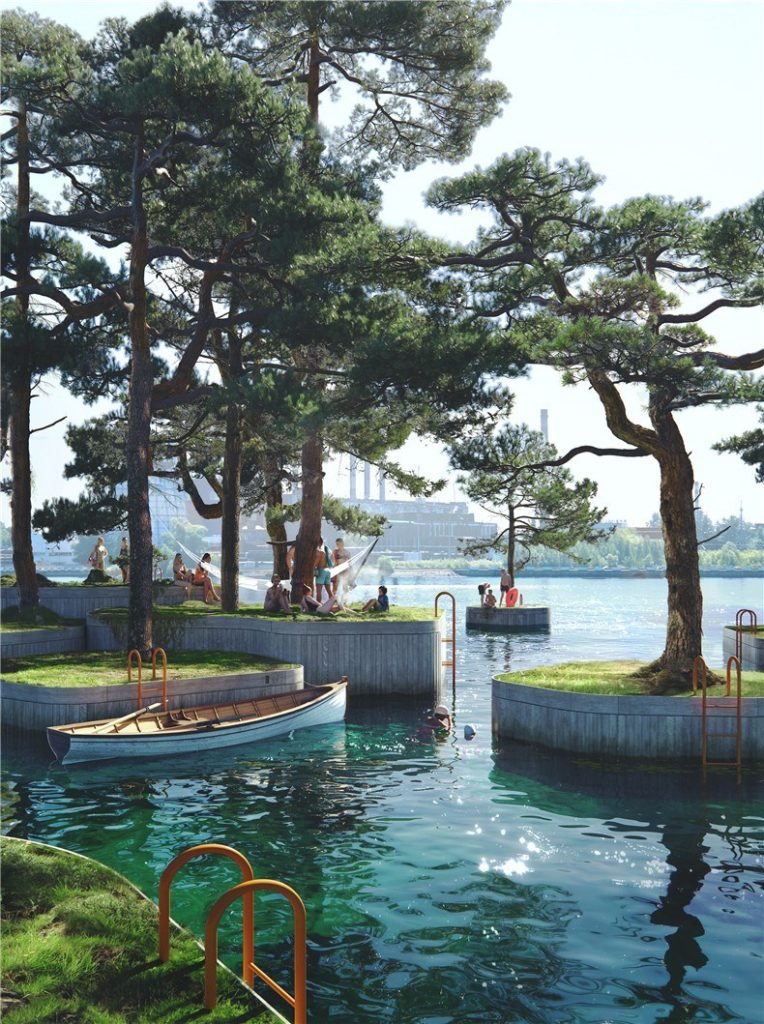
These islands will be constructed by hand using traditional wooden shipbuilding techniques at a shipyard in the southern port of Copenhagen. They will migrate between underutilized and newly developed areas according to the seasons, fostering vibrant living and activities.
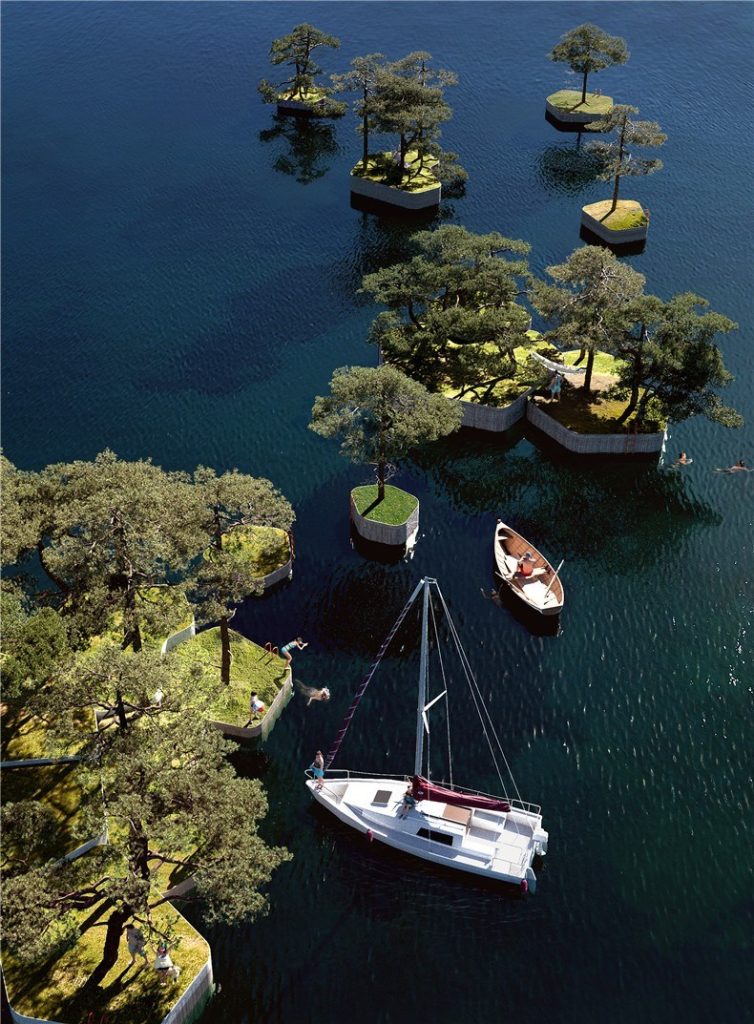
The initial prototype island “CPH-Ø1” debuted in 2018 and quickly became a popular attraction in the harbor. It hosted parts of a photography exhibition, a series of talks, and numerous waterfront picnics. In 2020, three more islands—CPH-Ø1, CPH-Ø2, and CPH-Ø3—are set to be introduced, with further expansion plans slated for the following years.
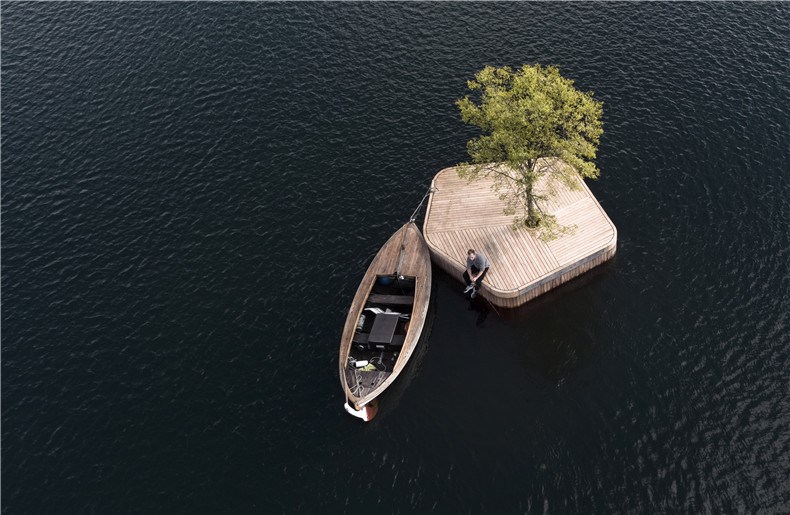
Copenhagen Island has received the Taipei International Public Space Design Award and the Social Design Award. Additionally, it was shortlisted for the Beazley Design Awards at the London Design Museum and has recently been announced as a finalist for the Danish Design Award.
